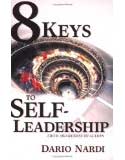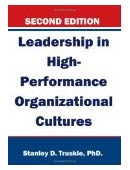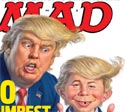
- About the MBTI
- Verify Your MBTI Type
- Personality Patterns
- MBTI Articles & Resources
- Article Directory for Educators & Students
- Books on Personality Types
- Emotional Intelligence & Personality Type
- Career Planning & MBTI
- MBTI Business Applications
- Lenore Thomson - Carl Jung Personality Type
- Site Map - Master Directory of All Articles
- MBTI Consultant Links
- Personality Type Workshops & Conferences
- Links to Other Type Websites
- Murder Mystery Business Theatre
- About Us
Articles on MBTI ® applications & Personality Types
TRANSFORMATIONAL LEADERSHIP: USING THE MBTI TO COACH
LEADERS
By Stanley D. Truskie, Ph.D.
(ENFJ)
Lou Gerstner, former chairman and CEO of IBM, led this blue chip giant from the brink of bankruptcy and mainframe obscurity back into the forefront of the technology business. Shortly after his departure in 2002, Gerstner was quoted in Business Week as saying, “Culture isn’t part of the game –it is the game”. This quote was in reference to the important role that transforming IBM’s culture played in the company’s turnaround.
Shaping the culture of the organization is one of the most important and critical responsibilities of senior executive leadership. In meeting this responsibility, executives face many challenges, but among the most perplexing are: one, what kind of organizational culture to shape; and two, how to plan and implement a cultural transformation.
Here are key learning /discovery/ action elements executive coaches should employ in helping executives transform their organization’s culture:
- Understand what organizational culture is, and how and why it impacts the performance of their organization.
- Use a transformational change model and strategy that demonstrates desired results.
- Learn and understand why an unbalanced organizational culture can actually disengage employees and diminish organizational performance.
- Implement a culture change plan that engages others, gains ownership, and guarantees successful implementation.
- Integrate a change model process that overcomes resistance to change.
- Review and change value statements that reflect the positive elements to integrate into the organization to shape the desired culture.
- Assess personal Type (MBTI) preferences to determine the unbalanced culture the leader will tend to create for his/her organization.
One of the most powerful approaches available in leadership coaching is self awareness because self awareness is the first important step in the personal change process. I have used 360 instruments, along with the MBTI to help leaders understand how their personal preferences tend to influence them in shaping unbalanced organizational cultures.
Organizational culture change must begin at the top. This is not something that can be delegated. The top leader, and other associated top leaders should complete the awareness process to learn and understand how each leader individually and collectively are influencing the shape of the organization’s culture.
Upon the completion of this process, the executive coach gives fed back to each executive individually, and then to the group as a whole. If the top leadership team is not willing to complete the self awareness process, then, in all likelihood, they are not sincere in transforming the culture of the organization.
The MBTI and Executive Leadership Coaching: Use the MBTI to Help Leaders Shape an
Optimally Balanced Organizational Culture
All leaders have preferences according to Jung’s Theory. The MBTI can be an excellent tool in
coaching leaders and helping them understand the unbalanced culture they will tend to shape
based on their MBTI preference. For example, an over- stated preference on say the Sensing/Feeling (SF) dimension will influence the leader to over emphasize the Cooperation culture
pattern which includes elements such as warm, friendly, empathetic, caring, and sharing. This overstated culture pattern can create a “country club” type of organizational culture that lacks
important elements from the other three culture patterns that are necessary for high
organizational performance. The goal should be to integrate the positive elements from all four
culture patterns to create an optimally balance organizational culture.
Coaching Leaders on What Really Matters
Most leaders really struggle with creating the right culture within their organization, whether it is
a unit, team, department, division, or company. Now there is a research-based model that can be
easily used in conjunction with the MBTI to help leaders know and understand the importance of
organizational culture, and the powerful impact they can have on building a performance
enhancing culture that will attain superior results.
The Model
The Model is called the L4 Strategy and is included in my book, Leadership in High-Performance Organizational Cultures, 2nd Edition (2010). I have researched and developed the
model, which was first introduced in my book’s original publication back in 1999. The recently
released second edition includes updated information on the model which I have successfully
used in coaching thousands of leaders from Fortune 500 companies, businesses, hospitals, and
non-profit organizations.
Practical and Useful
The L4 model has been widely endorsed by executives, managers, and supervisors who have
applied the model and have reported amazing results. These leaders were introduced to the
model by using the MBTI, supplemented with information contained in the book. The L4 model
contains four culture patterns that have been correlated with successful organizational
performance. These four culture patterns include:
Cooperative Pattern: This pattern based on the family/team concept includes such positive elements as cooperation, team work, sharing, diversity, and collaborative problem solving.
Inspiration Pattern: This pattern emphasizes the importance on treating people as individuals who desire meaning in their jobs and in their lives. Positive elements include job challenge, engagement, recognition, career planning, and training and development which enhance worker motivation and inspiration.
Achievement Pattern: This pattern places importance on the need to achieve excellent organizational performance. It includes positive elements of discovery, innovation, competition, being the best, and striving for excellence.
Consistent Pattern: This pattern emphasizes the need for discipline throughout the organization in order to obtain consistent results. The positive elements include order, rules, standardization, planning, follow-through, and measurement.
Shaping the Right Culture
Research shows that leaders of highly successful organizations strive to shape and maintain an
optimally balanced culture. In other words, high performing organizations have cultures that include the positive elements from all four culture patterns. The problem is that most leaders
have a tendency, or preference, to shape one or two patterns at the expense of others thus
creating an unbalanced organizational culture which under-performs when compared to an
optimally balanced one.
For example, using the two middle letters of the MBTI, which represents one’s preference for thinking and judging, a strong ST would have a tendency for creating an unbalanced Consistent Pattern utilizing a top-down management approach which emphasizes rules, regulations, autocratic decision making, and tight controls. This type of unbalanced culture stifles team work, worker engagement, and innovation.
Self-discovery using the MBTI helps the leader identify his or her thinking/judging preference and tendency to shape a particular unbalanced culture. Once this is accomplished, the leader is then coached on how to become more adaptive by incorporating leadership practices that represent the positive elements of the less preferred cultural patterns. In addition, the leader is coached on how to implement organizational mechanisms such as policies and practices to shape an optimally balanced organizational culture.
® MBTI, Myers-Briggs, Meyers Briggs, and Myers-Briggs Type Indicator are registered trademarks or trademarks of the Myers-Briggs Type Indicator Trust in the United States and other countries (aka meyers briggs or myers briggs).
Contact Information: Stanley D. Truskie, Ph.D. (954) 262-8434, st635@nsu.nova.edu |
![]()
Go Here to Learn more about Personality Type and Organizational
The MBTI Personality Type of Donald Trump - looking behind the media mask of The Donald.

"8 Keys to Self Leadership: From Awareness to Action"
Dario Nardi provides a handbook on self-improvement using the four mental functions and our introverted and extraverted selves as a template for self-development. I've also found the book helpful in understanding the "inner workings" of folks whose mental wiring is different from my own.
© Published by Ross Reinhold & Reinhold Development 1997 - 2023
Privacy Policy About Us



